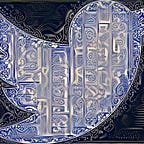Low-quality USB cables cannot charge your phone as quickly
Cheap micro “USB” cables that ship with cheap devices as power cables often only contain power and ground lines within them and omit the necessary data lines in order to save a few cents.
Normal USB 1.0, 1.1 and 2.0 cables contain 4 wires within them. Power, ground, D+ and D-. The latter two are the data lines that are actually used to transfer data.
This means these cables cannot be used as serial data cables and could fairly could be called “fake” USB cables, the spec of which was meant to implement a serial data bus.
While these cables can provide some power, there is also another effect of omitting data lines: D+ and D- are used to negotiate the amperage level with compatible chargers.
Without being able to negotiate power levels, the cable will not be able to supply as much power. USB 1.1 is supposed to supply 500 milliamps over the power and ground lines, which at 5V is 2.5 watts. But if it’s able to negotiate, compatible chargers can supply several times as much power.
Apple chargers, for example, indicate that they can supply more than 1 amp to the device by supplying 2 volts on the D- line and 2.68 volts on the D+ line. Sony, meanwhile, sends 3.3 volts on both D+ and D-. There’s another scheme in official USB specs, and there are probably countless others, all constantly changing as vendors try to make devices that can uniquely identify their own proprietary chargers. But all such schemes use the D+ and D- lines in order to do it.
To test this theory, I used two micro USB cables for which I had tested the presence of the D+ and D- lines: one with the data lines and one without, and a high-quality Anker charger, a USB power meter, and the same Android phone.
Sure enough, the “fake” cable was only able to charge the phone at 0.4 amps and 2.1 watts, and the real USB 1.1 cable supplied 1 amp and 5.4 watts.
The fact that these cables behave so differently despite externally looking the same and the issue is so easy to test for (here it comes) I designed my own simple tester. The theory of operation is as simple as possible: it just lights up leds for which lines are available, which can also tell you if a cable is too worn out.
I wrote some silly product copy and put it up on tindie, which is sort of like etsy for electronics.
Getting it ready for a small production run was a journey in itself, but a good learning experience given the extremely simple design. Everyone I’ve given one to and hopefully most of the people who’ve bought one loved the idea.
References
- https://www.maximintegrated.com/en/design/technical-documents/tutorials/5/5936.html
- https://www.eetimes.com/usb-battery-charging-its-harder-than-it-looks/#
- https://electronics.stackexchange.com/questions/123172/what-is-the-ideal-way-to-handle-data-pins-d-and-d-on-a-usb-power-adapter-to-be
- https://www.usb.org/sites/default/files/USB_Battery_Charging_1.2.pdf
